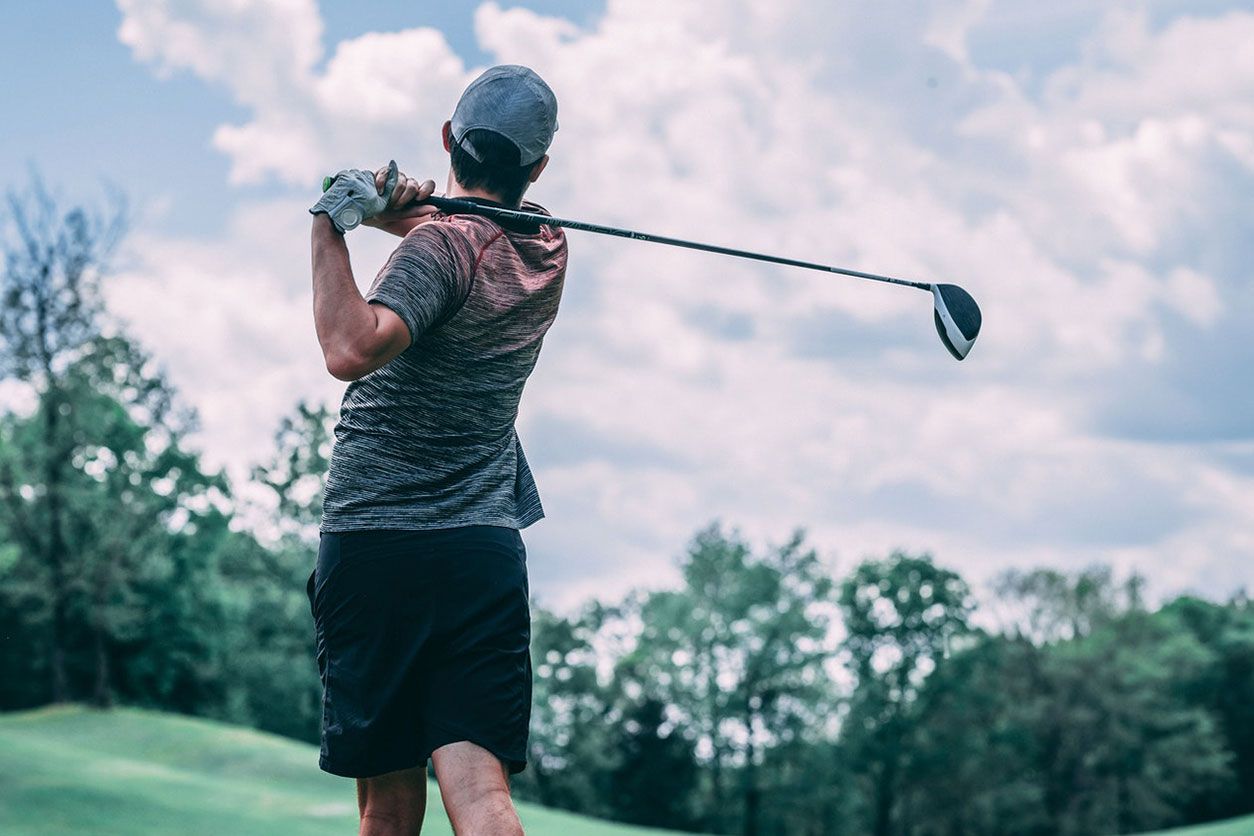Golf Injury Prevention

Golf is great for your mental and physical health, but building a good golf game can be hard on your elbows, shoulders, and wrists. The elements of golf injury prevention begin with at-home stretches and exercises and extend to your posture taking that final swing.
Unlike other sports, golf is too often thought of as a leisure activity that doesn’t require much preparation. However, golf-related injuries tend to be undercounted. The British Journal of Sports Medicine suggests about one in ten amateur golfers will experience at least one golf-related injury.
Always Stretch and Warm Up
A full-body stretch should be part of your routine, as it can prevent strains from occurring anywhere in your body during a round of golf. Start with a short walk or jumping jacks to warm up. Then move on to stretches that focus on your hands, wrists, elbows, shoulders, spine, and pelvis.
One of the most notable golf injuries builds up over time, making it hard to catch before it’s too late. Pain on the inner side of the elbow joint is indicative of medial epicondylitis, also known as golfer’s elbow. If you’re experiencing pain and discomfort in this area, you can learn more about golfer’s elbow here.
Diversify Your Hits During Warmups
Add variability to the driving range portion of a golf warmup. A study in the 2018 World Scientific Congress of Golf shows the benefits of hitting many different shots and clubs when warming up on the range before a round. Instead of hitting many shots with a few clubs, the study suggests it’s better to hit different clubs for the same shot using targets of different distances.
Not only can this approach provide physiological improvements, but the quality of the first ball hit might also improve. The group with a diversified warmup had shots that were far better than the other groups.
Apply Good Technique
Developing golf skills happens gradually as a result of routine practice and good technique. Have patience as you work up to your ideal level. While building up strength, focus more on proper form and technique than swinging as hard as possible. Per the Mayo Clinic:
- Use proper posture. Low back injuries account for the highest proportion of golf injuries. Stand with your knees slightly bent and feet shoulder-width apart and rotated slightly outward. With a relatively straight spine and upper body tilted forward, most of the movement should come from your hips. Try not to hunch over to avoid neck and back strain.
- Apply a smooth swing. The power of a good swing comes from your whole body, not just your wrists.
- Don’t overswing. To protect your joints and create better form, try to relax and don’t swing too fast.
Other Playing Tips
You might be surprised at the opportunity for injury on a golf course, from the lift of a bag to your attire. Strength training throughout the year can create the right muscle balance, especially around the shoulders, to help you hit that long drive.
Keep in mind three other sources of problems:
Wear proper footwear. Golf shoes with short cleats offer the right amount of traction. Cleats that are too long can hold your legs too tightly in place and strain your knees as you swing.
Careful carrying clubs. Carrying golf bags can lead to shoulder and back injuries. Use proper lifting technique when getting those heavy clubs out of the car: Keep your back straight, bend your knees, and use your leg strength to lift.
Avoid hitting the ground. It’s never intentional, but still important to know that elbow and wrist injuries often result from hitting the ground or the rough when you swing.
About That Swing …
Believe it or not, about 40,000 golfers reportedly seek emergency treatment each year, usually due to injuries caused by flying golf balls and club heads. So be mindful of others next time you head out, as your behavior could also hurt someone else.
And, just like with any sport, consider taking lessons. A refresher course with a good instructor will remind you of the technique necessary for being a great player.
If you think you’ve slipped a disc from a swing or experienced any other golfing injury, head for an immediate care clinic as soon as possible. The immediate care facility at MidAmerica Orthopaedics is often more cost-effective than the ER. MidAmerica also specializes in repetitive sports injuries like golfer’s elbow. You’ll get immediate access to a sports specialist and the proper diagnostics that same day, enabling you to head back to the golf course as soon as possible.
Reach out by email online with questions about how to prevent sports injuries, or call MidAmerica at 708-237-7200 today.

